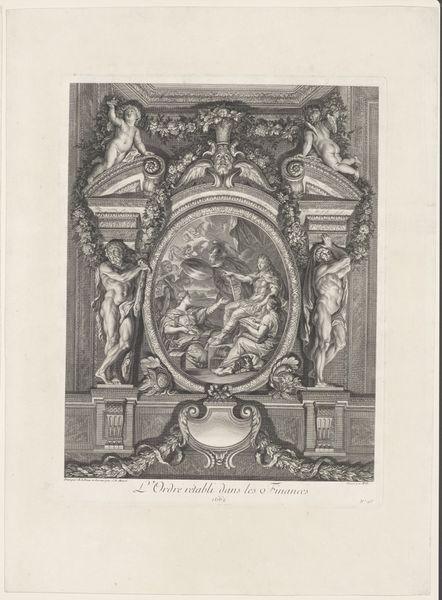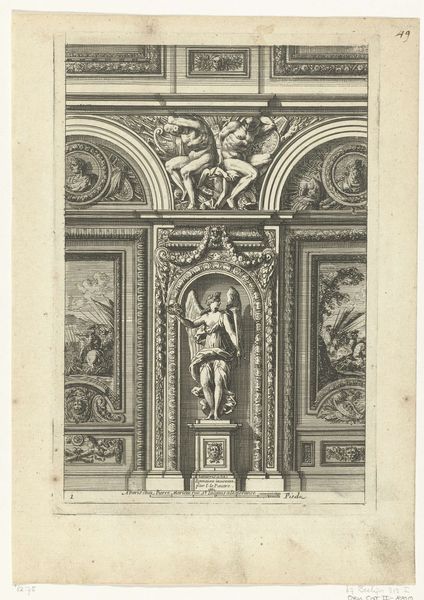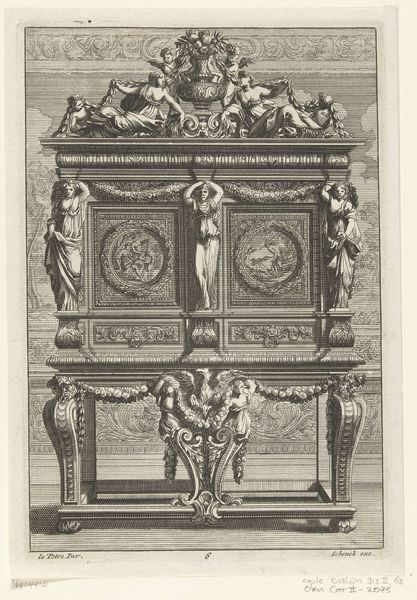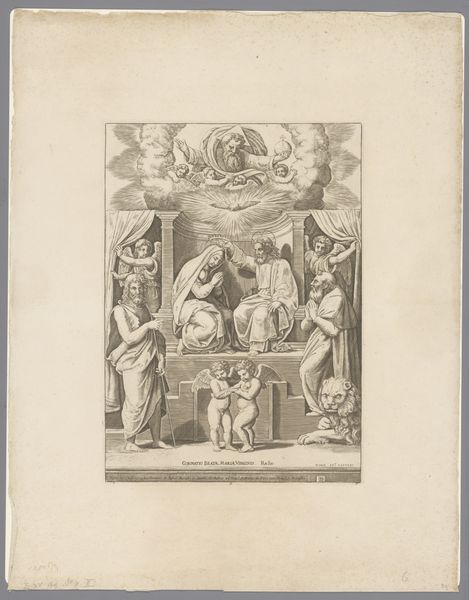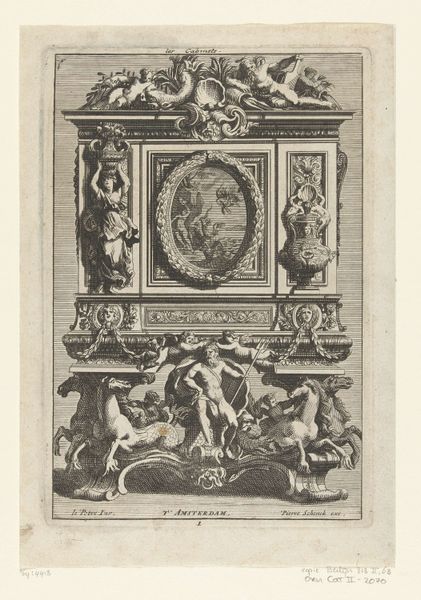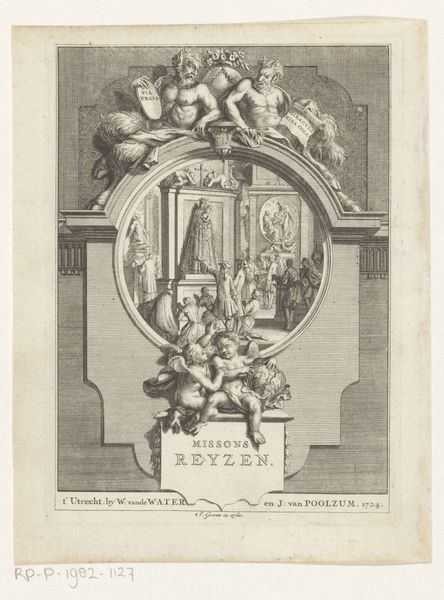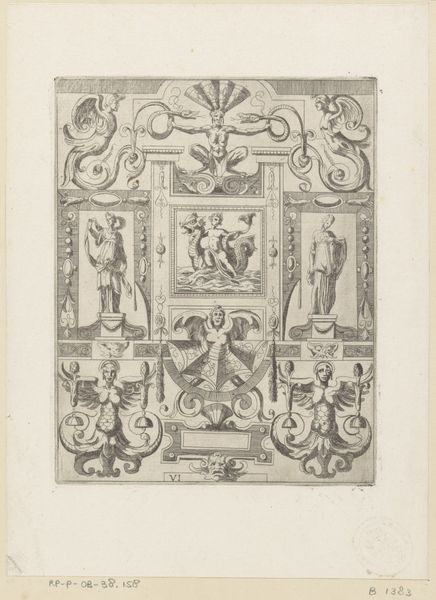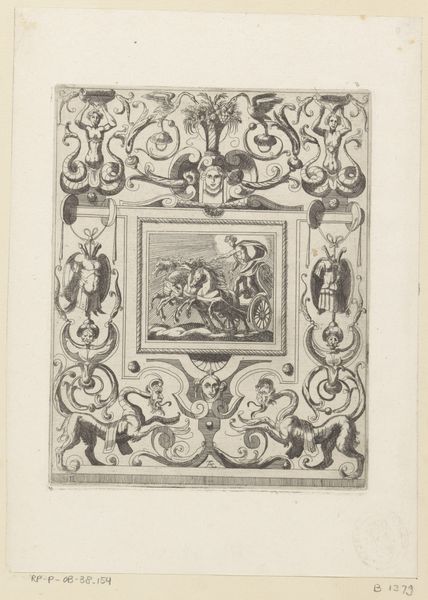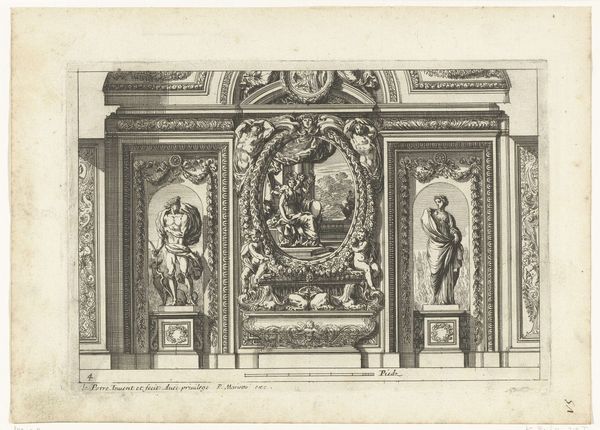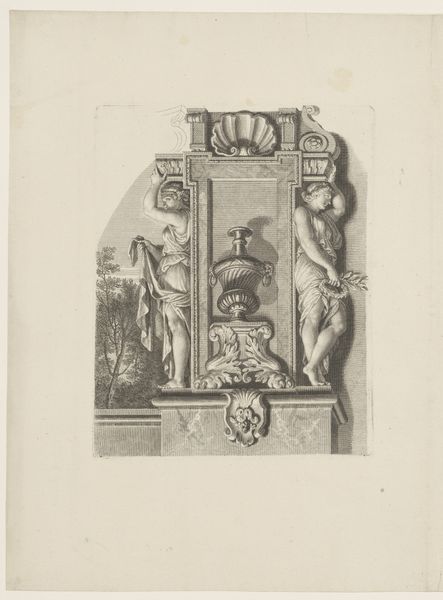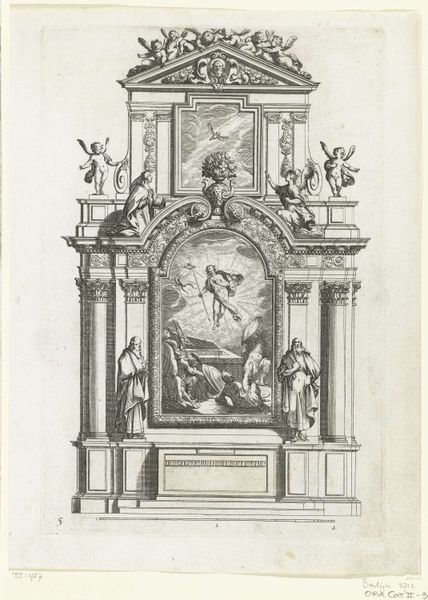
print, engraving
#
portrait
#
allegory
#
baroque
# print
#
old engraving style
#
classical-realism
#
figuration
#
history-painting
#
academic-art
#
engraving
Dimensions: height 486 mm, width 368 mm
Copyright: Rijks Museum: Open Domain
Curator: This print, currently held at the Rijksmuseum, is titled “Lodewijk XIV en Minerva met Welbespraaktheid en vijf Muzen”, made in 1752 after Louis Surugue. Editor: Wow, it has this almost ornate, theatrical feel to it. Like looking at a play within a play, complete with a heavily decorated proscenium arch! Curator: That's an interesting observation! The archway, or the frame of the image itself, does emphasize a certain artifice, fitting with the Baroque style of the piece, really highlighting this concept of courtly drama. We see cherubs, garlands, sculptural figures all surrounding the central oval. In this oval we find an allegorical scene. Editor: Allegorical indeed. It seems Louis XIV is flanked by Minerva, goddess of wisdom, with eloquence, muses, and presumably petitioners kneeling before him. It reads as a carefully staged promotion of royal power and enlightenment, doesn't it? It's about establishing divine right. Curator: Exactly. The iconography really points towards Louis XIV's image as not just a King, but almost a divine figure, a patron of arts and intellect, chosen by gods, or embodying traits from the most honored of gods. Editor: There's something about the way the figures are arranged and presented within the oval, feels almost claustrophobic to me. I can't help but feel that kind of power comes with being trapped. A feeling of being burdened by its own grandeur. Curator: That's a valid perspective. And of course, let's not forget it is a print. It gives the art wide-reaching impact, far surpassing painted renditions available to a few select wealthy collectors only. These images reinforce cultural and societal messaging. The engraver’s ability to render light, shadow, and texture with such precision allows to further deepen and expand on that narrative. Editor: Absolutely. It is fascinating to consider how deeply embedded symbols and narratives shape perceptions of power. So thank you to the engraver who brought all of this to the foreground of our thought! Curator: Indeed. It leaves us reflecting on the ways art and symbolism are intertwined in creating our understanding of history and how this plays a significant role in reflecting the period's ideas around governance and divinity.
Comments
No comments
Be the first to comment and join the conversation on the ultimate creative platform.

